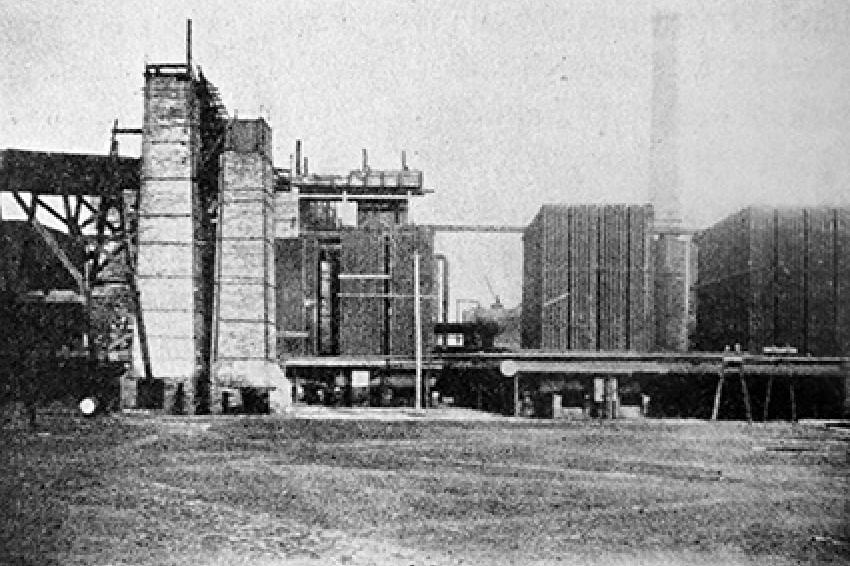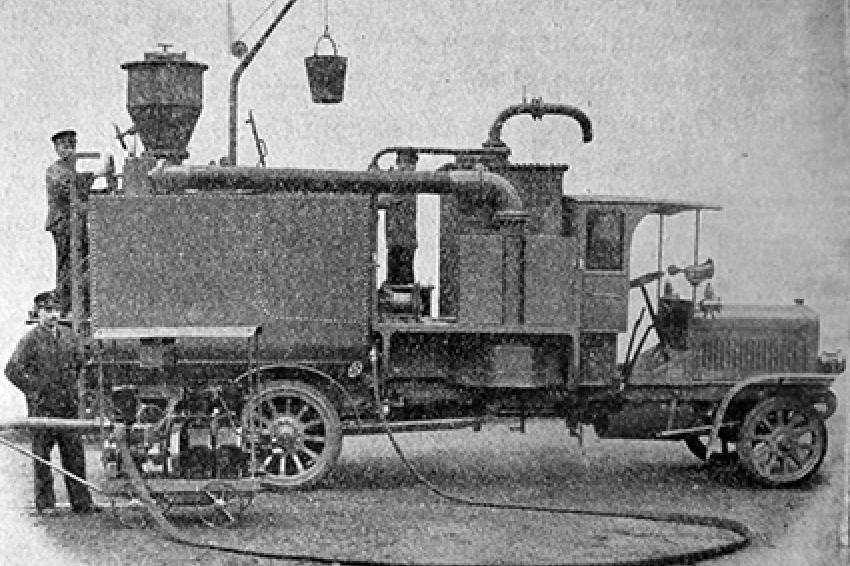Pioneer in Chemical Technology
CHEManager International publishes excerpts from Ullmann’s Encyclopaedia of Industrial Chemistry
Ullmann's Encyclopaedia has become a global brand for reliable specialist information on Industrial Chemistry across more than 130 countries. First published 100 years ago, the major reference work celebrates its centennial in 2014.
The year 1914 saw the outbreak of the First World War, which changed the face of the world with lasting effect. But other events of that fateful year, if less well known, have also left their mark on the present. For one, the Urban and Schwarzenberg publishing house released the first two volumes of a 12-volume reference work by Professor Fritz Ullmann of the Berlin University of Technology: the Encyclopaedia of Industrial Chemistry. The price of the first edition - half-bound in leather, with gold-embossed lettering - has been lost in the mists of time, as has the number printed, but the work was a success, with the publishers issuing another edition and then a reprint soon after the first sold out. Since then, Ullmann's has been a must-read for every industrial chemist.
As Ullmann's turns 100, browsing the first edition transports us back to the start of the 20th century. The illustrations in this article, all taken from the original Ullmann's, give an impression of the world of chemistry at the time. Some things appear antiquated, such as carbonizing brown coal to produce paraffin. Some seem progressive, such as the industrial-scale production of milk powder in drum driers. And some create a feeling of déjà-vu, such as extracting bituminous shale as an alternative to crude oil, the recoverable reserves of which were thought to be running out - a perennial concern, it turns out.
A Major Reference Work Makes the Leap to the Internet
When Ullmann's came to German Chemistry Publisher Verlag Chemie (VCH) at the start of the 1970s, it was the first work there to have an in-house editing team, at times numbering more than half a dozen. As the final volumes of the fourth edition were published, the team had already begun work on the fifth, translated for the first time into English and released between 1985 and 1996 with the help of hundreds of newly recruited authors from around the world. In 1997 Ullmann's was digitalized and sold on CD for installation on local networks. Three years later, it became the first Wiley-VCH major reference work to make the leap to the Internet, its primary home (with regular updating) ever since, supplemented by new print editions in 2002 and 2011.
What may read like a well-planned success story in fact required frequent navigation into uncharted waters, demanding creativity, steady nerves, and a willingness to take economic risks. That pioneering spirit set a standard, and Ullmann's still leads the field in introducing forward-looking technologies. It is now among the first encyclopaedias to use the newly developed Smart Article technology, allowing substances to be found, compared, and placed in relation to one another based on their chemical structure alone.
Kirk-Othmer: Counterpart, Potential Adversary, Companion
As popular as it was, the original Ullmann's did have one key flaw: you had to know German to read it. In the 1940s, Donald Othmer and Raymond Kirk of New York University started compiling an English-language counterpart, and The Encyclopedia of Chemical Technology, now known as Kirk-Othmer, was published from 1947 on in five editions by America's most important chemistry publisher, John Wiley & Sons. The 1996 VCH acquisition brought Ullmann's (by then in English) and its American counterpart into the hands of the same publisher, where what could have been a battle of the giants became one of the most successful product families. Together, the two works are unbeatable, with combined knowledge that can answer almost any question arising in the context of chemical products and processes.
Fritz Ullmann's Prescience
If the content, language, and means of circulation have changed, the idea behind Ullmann's has nonetheless remained the same, as revealed in Fritz Ullmann's 1914 preface:
The main purpose of this work is to provide a clear and precise study of current technical operating principles. [...] The encyclopaedic nature of the work requires its contents to be in alphabetical order. In the interest of clarity and to avoid repetition, however, it appears expedient to place fields with closely interrelated content in equally close physical proximity. For example, "soda" is dealt with under "sodium compounds" and, similarly, descriptions of inorganic salts and oxides always follow the element in question. [...] In this manner, the backbone of the work is made up of long articles combining information, interspersed with numerous shorter treatises and references to main articles, where appropriate. Each of these self-contained articles, some of which deal with processes which have until now been kept secret, comprises a historical introduction, then a short description of older working methods, followed by a detailed description of current approaches. In the case of the more important products, particularly close attention has been paid to secondary and waste products, analysis, use and economic factors (pricing and statistics). Throughout the works, great importance is attached to providing a most detailed list of sources, and a critical glance is cast at the patent literature in the field.
The prescience of his vision is evident in today's Ullmann's, still modelled successfully on this description.
Others have continued his legacy through the years. Since 1987, Ullmann's has born the stamp of Barbara Elvers, first as an editor and since 2008 as Editor-in-Chief, supported by an editorial advisory board of 22 experts, half from the industry and half from academia. And where it took 150 authors to write the first edition, there are now 3,000, many from countries that did not even exist 100 years ago.
100 and Still Number One
With more than 30,000 pages, Ullmann's is the most comprehensive Wiley-VCH encyclopaedia, and also the most heavily used. Its online access metrics have led the field by a wide margin for years, and few other reference works are cited as frequently. It has become a global brand for reliable specialist information across more than 130 countries, from Alaska to New Zealand, from South Africa to Korea. Its retention of content from earlier days is a plus as well; routine technical processes that are largely absent from the current specialist literature are here side by side with the latest procedures, helping plant operators choose when and how to reorganize a process, and patent lawyers decide to what extent a new process is ahead of the latest technology. With a practically inexhaustible range of data and information, Ullmann's is a reliable companion throughout careers and lifetimes.
We are marking the anniversary year in several ways, looking back with excerpts from the 1914 edition posted on ChemistryViews and with a series of articles in CHEManager and CHEManager International in which Ullmann's authors trace the industry's last 100 years through selected products and processes. And we will look forward, too, making Ullmann's massive store of knowledge even more accessible in a new series of articles titled Ullmann's Academy and offering short presentations of concepts and methods, accessible free of charge and linked to corresponding Ullmann's articles. In taking these steps, we honor the spirit of Fritz Ullmann, whose life's work went into processing and spreading knowledge, and whose name is today a synonym for comprehensive, reliable, specialist information.














